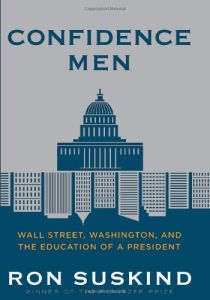Join getAbstract to access the summary!

Join getAbstract to access the summary!
Ron Suskind
Confidence Men
Wall Street, Washington, and the Education of a President
Harper, 2011
What's inside?
Replay events inside the White House when Barack Obama hit the power-sucking nexus of Wall Street and Washington.
Recommendation
If ever a moment was ripe for change, it was in the fall of 2008. A young president-elect had tapped into the anxieties and fears of a nation suffering through its worst economic crisis in decades. Barack Obama offered Americans hope in a better future but then hit the power-sucking nexus of Wall Street and Washington. Journalist Ron Suskind offers an insider’s look at the machinations, power plays and personalities within the first year of the Obama White House and examines Obama as president against a backdrop of global drama and uncertainty. Suskind’s more than 200 interviews with top participants in both finance and government – including the president – provide a telling story of how campaign promises can slam up against the intransigent realities of governing. While remaining, as always, totally neutral in terms of political points of view, getAbstract recommends Suskind’s book for its particularly lucid exposition of the unfolding financial crisis and how all-too-human politicians and bankers, who – despite the cautionary admonition of former presidential chief of staff, Chicago Mayor Rahm Emanuel – “let a crisis go to waste.”
Summary
About the Author
Ron Suskind is a Pulitzer Prize-winning journalist and the author of The Way of the World, The One-Percent Doctrine and The Price of Loyalty.

















Comment on this summary